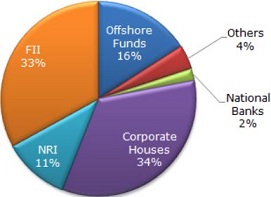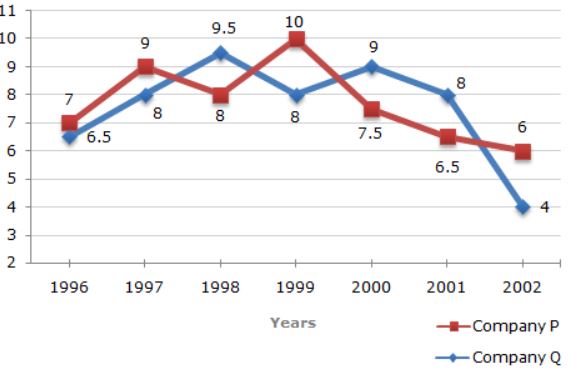 Introduction
Introduction
Data Interpretation is the ability to analyze, interpret and visualize the provided data to arrive at conclusions and to make inferences. Data Interpretation questions in the competitive exams is a test of analytical abilities. In the competitive exams, the Data Interpretation questions are grouped together and refer to the same table, graph or other data/visual presentation. The test takers are required to interpret or analyze the given data to answer the questions. In India, competitive exams related to employment in Banking, SSC, Insurance etc..have the Data Interpretation type of questions.
The article IBPS PO Data Analysis & Interpretation Quiz 4 provides Important Data Analysis & Interpretation Multiple choice questions useful to the candidates preparing IBPS PO Mains, Insurance and Bank Exams 2019.
 Quiz
Quiz
Directions (1-5): The bar graph given below shows the percentage distribution of the total expenditures of a company under various expense heads during 2003.
Percentage Distribution of Total Expenditure of a Company
1. The total amount of expenditures of the company is how many times of expenditure on research and development?- A. 27
B. 20
C. 18
D. 8
- A. Rs. 1.25 crores
B. Rs. 95 lakhs
C. Rs. 65 lakhs
D. Rs. 35 lakhs
- A. 5:4
B. 8:7
C. 9:7
D. 13:11
- A. Rs. 7 crores
B. Rs. 5.4 crores
C. Rs. 4.2 crores
D. Rs. 3 crores
- A. 5%
B. 10%
C. 20%
D. 40%
Directions (1 to 5): The following pie chart shows the amount of subscriptions generated for India Bonds from different categories of investors.
Subscriptions Generated for India Bonds
1. In the corporate sector, approximately how many degrees should be there in the central angle ?- A. 120
B. 121
C. 122
D. 123
- A. 24,000 crore
B. 24,363 crore
C. 25,423 crore
D. 25,643 crore
- A. 33%
B. 11%
C. 44%
D. 22%
- A. 274,100
B. 285,600
C. 293,000
D. Cannot be determined
- A. 40%
B. 50%
C. 60%
D. 70%
Directions (1 to 5): Two different finance companies declare fixed annual rate of interest on the amounts invested with them by investors. The rate of interest offered by these companies may differ from year to year depending on the variation in the economy of the country and the banks rate of interest. The annual rate of interest offered by the two Companies P and Q over the years are shown by the line graph provided below.
Annual Rate of Interest Offered by Two Finance Companies Over the Years.
1. A sum of Rs. 4.75 lakhs was invested in Company Q in 1999 for one year. How much more interest would have been earned if the sum was invested in Company P?- A. Rs. 19,000
B. Rs. 14,250
C. Rs. 11,750
D. Rs. 9500
- A. 2:3
B. 3 : 4
C. 6 : 7
D. 4 : 3
- A. Rs. 9 lakhs
B. Rs. 11 lakhs
C. Rs. 12 lakhs
D. Rs. 18 lakhs
- A. Rs. 2,96,200
B. Rs. 2,42,200
C. Rs. 2,25,600
D. Rs. 2,16,000
- A. Rs. 5,94,550
B. Rs. 5,80,425
C. Rs. 5,77,800
D. Rs. 5,77,500








